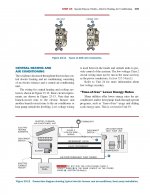RLMJR
Member
- Occupation
- Electrical Engineer
I have a project replacement of split type AC unit in a building, the condenser unit is 20 ft away from air handling unit and panel board at mechanical room, there is an existing underground conduit from condenser (outside) to mech room w/c i planned to reuse. the conduits are 2 -ea 2" pvc sch 40 wth separation of 1" apart, my plan is to use one conduit for power of condenser (8 awg) 208v 3 phase 60 hz, and the other for control wire connection of ahu to accu and other controls, question is , is this orientation allowed in the code? is there any specific distance requirement for control of acu and power? is this orientation going to affect the control signals? note the voltage is 208V 60 hz 3 phase. Is this better that putting all in one conduit? or i need to add a conduit for control far enough from the power conduit?
Thanks in advance for the answers.
Thanks in advance for the answers.


